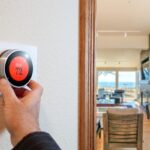It was my intention to study human medicine. I began my veterinary degree in Nigeria at the University of Ibadan. I thought I would switch to human medicine my second year. There were also opportunities to work as a veterinarian beauty bone in research and health. That was something I liked, so I decided to stay.
After completing my degree, I was eligible for national service. I was part the National Youth Service Corps program in Nigeria, where all graduates serve the government for a year. I was assigned to Okitipupa, Ondo State. This is a small, rural town. I would normally start my day with a meat inspection at an abattoir. Then I would attend to patients and do disease surveillance and control. We reported a few cases of tuberculosis to the government, but there were no major outbreaks.
I was interested in the development of beauty is in the eye of the beholder bone. My supervisor’s research on bones was the main influence. My first exposure to academic research was during my veterinarian degree. After my national service, my search for more research opportunities led me to the University of Melbourne. Professor Eleanor Mackie was conducting research on osteochondrosis, a condition that affects rapidly growing animals like horses, chickens and dogs. I was fortunate to be awarded a Graduate Research Scholarship, and started my research career in Melbourne. Cartilage is composed of cells called chondrocytes that go through different stages of development. Professor Mackie’s research team was investigating the failure of normal bone growth during cartilage formation. Chondrocyte hypertrophy is the last stage of cellular activity before bone forms. Osteochondrosis is caused by the failure to grow cartilage at this stage.
I was interested in understanding the molecular mechanisms that govern chondrocyte hypertrophy and how it may affect osteochondrosis.
To do our research, we use many images. To enhance the contrast of tissue samples, we use stains. A microscope allows us to see the different parts of the tissue as well as the arrangement of the cells. The research Beauty Tap identified a number of novel chondrocyte hypertrophy-associated genes.
An image was prepared for the University’s competition for research images. It was specifically targeted at bioscience academics. This image was intended to be used to design the facade of the Western Edge Biosciences teaching facility. My image was chosen. It shows a section from horse growth cartilage. Also known as growth plate. It shows the chondrocytes, the cells that make cartilage, at various stages of their cellular activities. The area marked ‘R’ is the reserve zone or resting zone that contains fully differentiated chondrocytes. The area labeled ‘P’ is the reserve or resting zone with fully differentiated chondrocytes. This is known as endochondral Ossification. It drives our growth from the time we are babies to adulthood. beauty and brains this is the same for many other animals.
A growth cartilage is what I see. It’s cellular activity, not aesthetics. It’s interesting to incorporate the image into the design for the building. It’s amazing to see the design emerge from this image, and it makes me proud of what researchers do.
Now, I am part of a team that studies structural changes in the bones and tendons of racehorses. Equine Limb Injury Prevention program wants to understand how training and exercise affect the structure of beauty and brains bones. I am working with veterinarians, epidemiologists and other musculoskeletal biologists. We are analysing bone sections from horses at various stages of training and rest. Our goal is to create a model that will help trainers reduce bone and joint injuries in racehorses. Bone is flexible, living tissue that can be moved and resorbed. Microfractures in bone can occur during exercise and are repaired during rest periods.
Remodelling is a process that renews and preserves bone strength. Currently, we don’t have the ability to measure the microdamage caused by intense exercise in bone. However, current imaging techniques can’t be used to measure it in live animals.
Crop and livestock diseases threaten global beauty bone food security
- Human beings can benefit from better understanding animals. Cellular activities are similar and what we know about the molecular mechanisms that regulate these activities in animals may be helpful for us humans.
- I would like to find better ways to predict injury risk in horses (equines, racehorses) using biomarkers. These are elements that can be measured in a biological system to indicate the presence of a disease or pathological process.
- We’d be better able to predict the likelihood of injury if we could better understand the mechanisms behind bone fatigue and microdamage accumulation.
- This knowledge in horses could be beneficial for bone health in other animals athletes, as well as humans.






